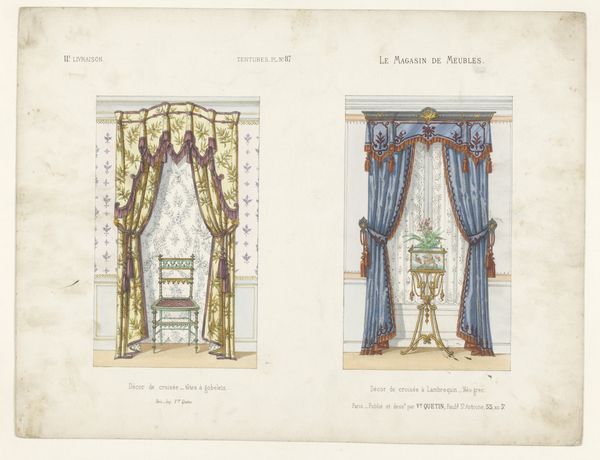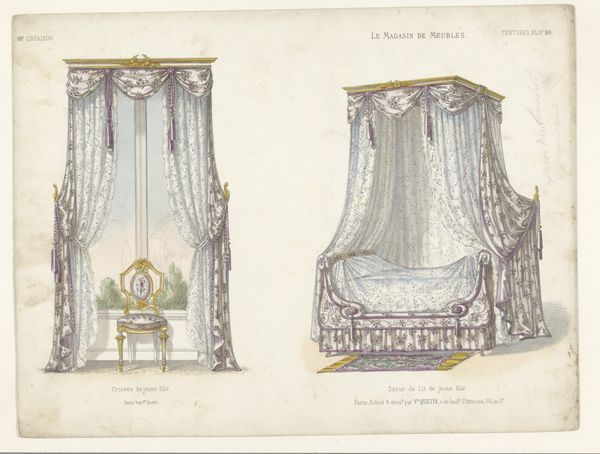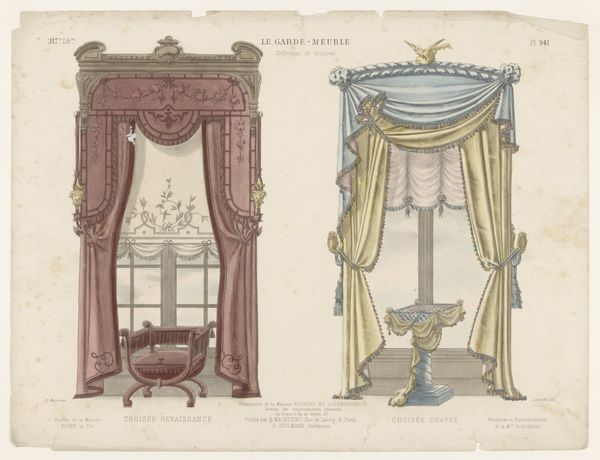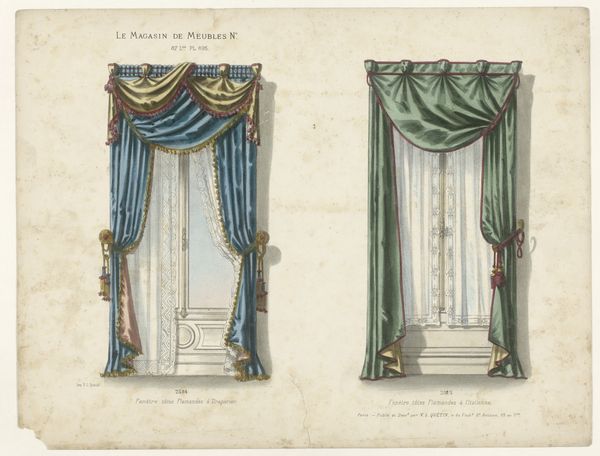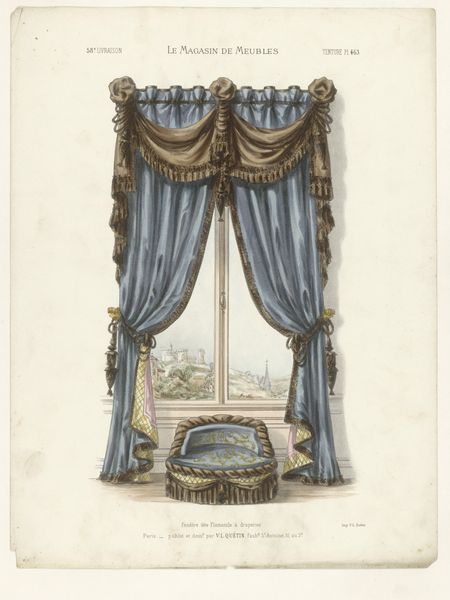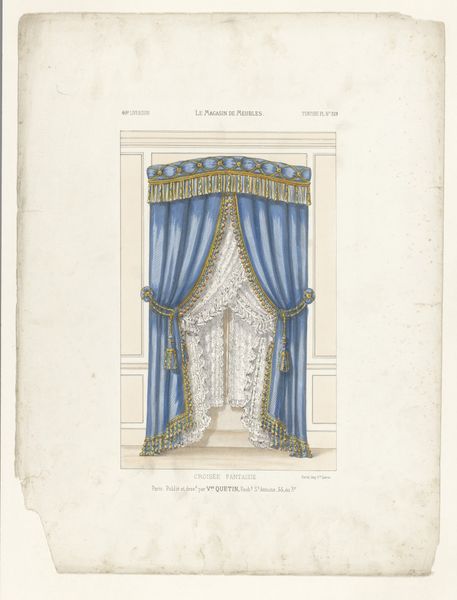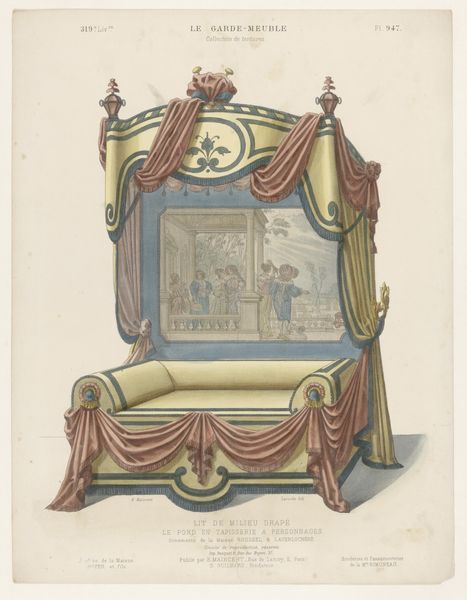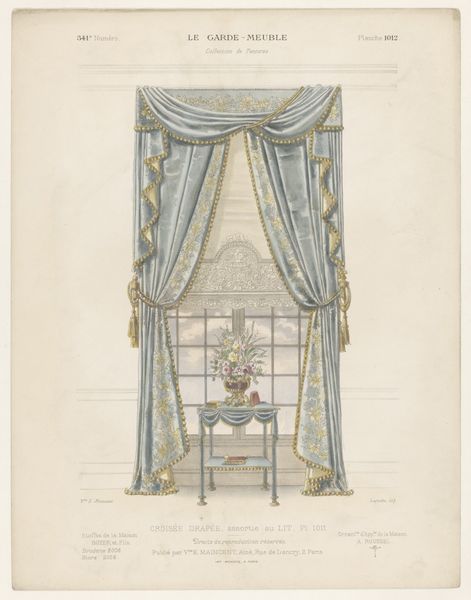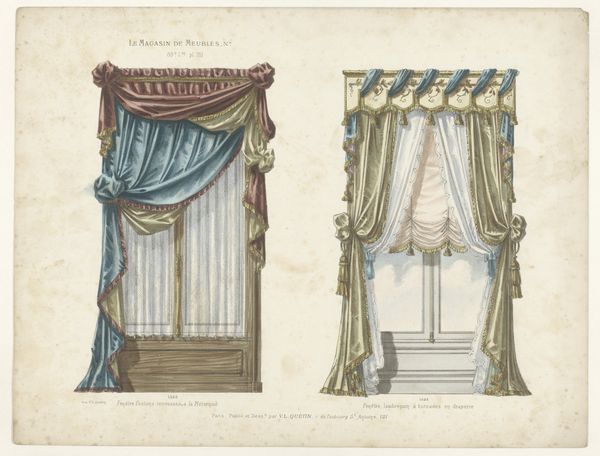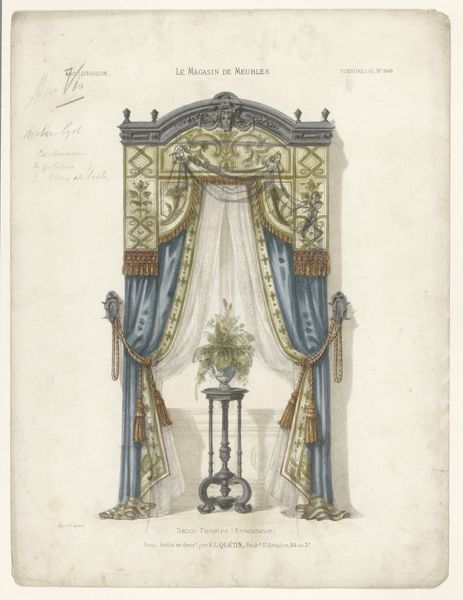
drawing, coloured-pencil
#
drawing
#
neoclacissism
#
coloured-pencil
#
coloured pencil
#
watercolor
Dimensions: height 271 mm, width 359 mm
Copyright: Rijks Museum: Open Domain
Curator: This delicate drawing presents us with two distinct yet connected studies of interior decoration. Titled "Venster met gordijnen en schouw met draperieën", it's estimated to have been created between 1832 and 1877. We know that it employs coloured pencil and watercolor on paper and may be cataloged under the art movement Neoclassicism. Editor: Wow, my first impression is of meticulous… stillness? Like peering into a dollhouse of dreams. The pale blues and yellows are so restrained; even the frills have a sort of quiet dignity. Curator: Exactly. Think about the role of drapery. The curtains here act as symbolic veils, delineating space, concealing, and revealing. We see them echoing in both window and mantelpiece settings. How do these repeated motifs reflect bourgeois values and aesthetics in the 19th Century? Editor: It is like each drape speaks to each other and the viewer, isn't it? They hint at concealed meanings and a controlled beauty –almost theatrical. I'm curious about the intended mood; does the artist offer us access to intimacy or, rather, to an idealized facade? Curator: Note the precise rendering, almost a catalog of the desirable object. These could have been aspirational objects rendered for the increasingly powerful French upper class during this era. Editor: I am sensing that, and you are right. Everything is in its place, just so… It seems that beyond Neoclassical aspiration, this is a testament to the allure of order, or, even further, perfection and balance as status symbols. Curator: These symbolic references would have immediately communicated particular aspirations, codes, and meanings to a knowing public. How intriguing is that interplay between surface and symbolism, aspiration, and restraint? Editor: Really is! It also leads us to wonder whether such stylized depictions eventually shaped the actual aesthetic landscape of the period itself. Talk about art imitating life, or maybe life being coerced into imitating art.
Comments
No comments
Be the first to comment and join the conversation on the ultimate creative platform.
